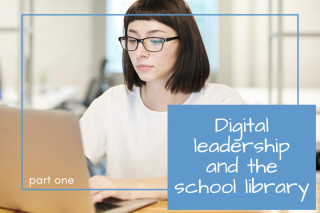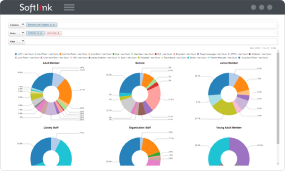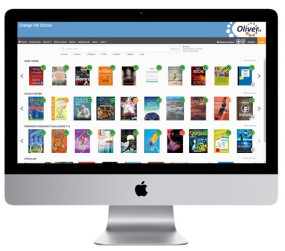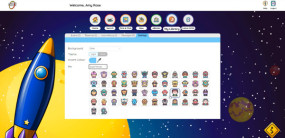- Your School Type
- Solutions
- Resources
- Blog
- Events
- More
- Contact Us
- Book a Demo
- Get a Quote

In his article 7 Pillars of Digital Leadership in Education1 Eric Sheninger, Principal at New Milford High School, shares:
‘With society becoming more and more reliant on technology it is incumbent upon leaders to harness the power of digital technologies in order to create school cultures that are transparent, relevant, meaningful, engaging, and inspiring.’
Sheninger proposes 7 Pillars of digital leadership, specific concepts embedded in the culture of all schools, which can be improved or enhanced through technology. They include:
In her research paper, School Librarians as Technology Integration Leaders2, Melissa P. Johnston says:
“The changing information landscape and highly technological environment of 21st-century schools has significantly redefined the role of school librarians. As technology has become a crucial element of teaching and learning, school librarians, as information specialists and educators, have the potential to lead through technology integration.”
With school library staff increasingly positioned as digital leaders within schools, this blog series explores how library staff can apply the 7 Pillars Framework to their role, as well as practical examples of how Oliver v5 and Softlink Education can support this.
In part one we will discuss communication, public relations, branding, and student engagement and learning.
As digital technologies have advanced, we are no longer limited to one-way, static communication methods, for example newsletters and websites. Rather, we have the tools to communicate with students, parents, teaching staff and stakeholders in real time, on multiple devices for example social media, library home pages, and automated alerts.
Digital leaders need to provide the whole school community with relevant information, in real time.
Oliver v5 can help support this effective communication through:
Oliver can also help you to communicate with your management team through automated and real time reports. These reports can provide statistical information such as stock levels, expenditure, literacy progress, popular items, usage levels etc. which can help to inform decision making and planning future expenditure in the areas that provide the most value.
Furthermore, Oliver’s mobile phone app allows your library to travel with every individual in the school no matter where they are or what time it is. Students can log in to see messages, current loans, and reserve books.
Library staff can use the same app to scan barcodes, especially useful when they are shopping and come across a book sale. They can quickly scan the ISBN and see if they already have a copy in the library.
Communication is more than just what we do communicate, it is also about what we should not communicate. We need to be sensitive to the range of information housed within the system and who has access to this information, for example specific details about students.
Oliver enables staff to apply security measures that protect this information, blocking or limiting access as required. Oliver has a full range of rights and privileges that can be assigned to whole groups of people, or individuals.
According to Eric Sheninger, “If we don’t tell our story, someone else will, and more often than not, another’s version will not be the one we want told.”
As digital leaders, school library staff need to create transparency by telling their own positive story using the digital tools available to them. They need to become storytellers-in-chief, and shape the story being told, through a variety of channels. In doing so, they can develop positive stories and create transparency.
The Oliver v5 home page is a fantastic public relations tool for your school library. It has been designed so that library staff can easily add content such as book carousels, links to online resources, reading lists, slide shows, library news, events, and more.

Oliver v5 can also help library staff to promote the true value of your school library to management and stakeholders through reports generated with Analytical Reporting. With a simple drag and drop format to create a range of reports, in a range of formats, you can easily provide data that reflects the importance of the service you provide.
“Businesses have long understood the value of brand and its impact on current and potential consumers,” Eric Sheninger
Your school’s brand impacts your school’s image.
Digital frameworks can be used to build a brand that emphasises positive school cultures, increases community pride, and attracts or retains students.
Your school library homepage should be one that captures the culture of your school, demonstrates/ increases pride in your school and your library, and engages students. It is your “storefront” and an excellent avenue to advocate the value of your library to the school.

Oliver provides branding opportunities for your school, with the ability to customise the library home page with your school logo and colour scheme. The interface setup wizard is an easy to use, intuitive online editor, that requires no knowledge of html or other coding. And with in-program help buttons, designing your library home page could not be easier.As one of our regular updates, email enrichment was introduced in 2019, which enables you to embed images (for example school logos and banners), customise fonts, and format your email footer in emails coming from your system to the users, for example overdue notices.
Links can be embedded directly from your school website or learning management system to Oliver (and vice versa), and with social media integration, you can present your library with a consistent look and feel across all platforms.
Additionally, the Oliver interface is designed to replicate popular online programs, which helps to associate your “brand” with modern, cutting edge technology, great for presenting to prospective families.
Students who are not engaged are not likely to be learning. To encourage student engagement, using and integrating digital tools that are familiar to students will encourage them to engage in learning.
“Leaders need to understand that schools should reflect real life and allow students to apply what they have learned through the use of the tools they are using outside of school,” Eric Sheninger
Oliver v5 has been designed with students, for students and reflects the popular platforms they use every day.
According to Dianna Jarnet, Librarian at Coburg High School:
“[Students’] faces light up when they first get online.”
“As soon as they log on their eyes bug out because they’re seeing what they think is a streaming site.”
Diana shares that as a result, borrowing has increased and students are getting so excited that they are reserving many more books than they could get through. You can hear more from Diana in this short video.

Due to this similarity to other platforms they use every day, students will be able to navigate the Oliver interface with ease. They can browse through lists such as recommended for you, because you read, other books in this series, for example, making it quick and easy for them to connect with books they will enjoy which, in turn, will help to promote reading for pleasure.
Oliver encourages increased reading for pleasure by identifying books that each student would enjoy based on their individual reading habits and previous loan history. These books are displayed in sliders of cover images for the students when they access the system.
Students can also review books, writing their own recommendations or giving star ratings. Peer review is not only a fantastic way to encourage students to read, but it also engages the review writer further with the book, and the library.
Furthermore, reviews and star ratings provide an avenue to demonstrate student engagement in the library (and by extension help you to advocate for the importance the library) to management and stakeholders.
Avatars and backgrounds in the junior interface allow younger students to create their own space, which is not only engaging and fun, but also allows them to dive quickly into a space that feels familiar to them… because it’s theirs. Picture search, predictive text and “did you mean” in the search functionality make searching the library catalogue easier for younger students to master, a search that will grow with them as their reading skills grow.

In part two of this series, we will discuss professional development, re-envisioning learning environments, and opportunity.
References